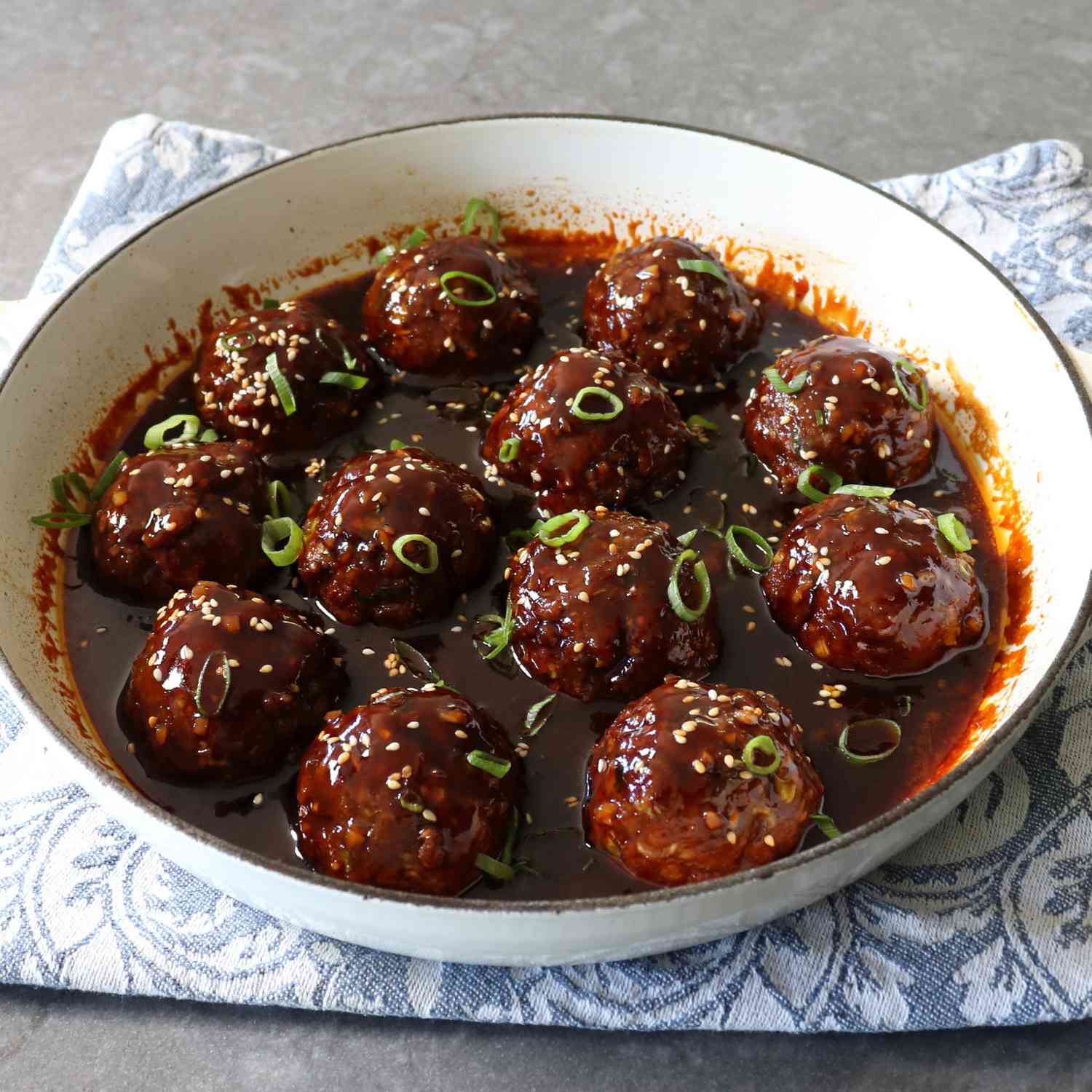Korean Barbecue Style Meatballs: Recipe, Tips, and Nutritional Benefits
Korean barbecue style meatballs feature key ingredients that give them their distinctive taste. Ground beef or pork is often the primary protein, providing a meaty base. Garlic, ginger, and green onions enhance the flavor, offering aromatic and slightly spicy notes. Soy sauce and sesame oil contribute umami and nutty undertones. Brown sugar or honey is usually added for a subtle sweetness, balancing the savory components. The inclusion of gochujang (Korean red chili paste) introduces depth and a touch of heat, while panko breadcrumbs ensure a moist and tender texture.
The Role of Spices and Sauces
Spices and sauces play a crucial role in defining the flavor profile of Korean barbecue style meatballs. Gochugaru (Korean red pepper flakes) adds an extra layer of spice, complementing the gochujang. Sesame seeds are typically sprinkled over the meatballs, enhancing both flavor and texture. Soy sauce, while a key ingredient in the meatballs themselves, also serves as a base for dipping sauces. Combining soy sauce with rice vinegar, garlic, and a dash of sesame oil creates a balanced, tangy, and savory dipping sauce. These elements together form a complex, rich, and ultimately irresistible flavor profile.
Cooking Korean Barbecue Style Meatballs
Tips for Perfect Meatballs Every Time
Choose fresh, high-quality ingredients for the best flavor. Use ground beef or pork as your base, and combine it with garlic, ginger, green onions, soy sauce, sesame oil, brown sugar or honey, gochujang, and panko breadcrumbs. Ensure the mix is even to create well-blended flavors.
Form meatballs with uniform size. Aim for golf ball-sized portions to ensure even cooking.
Chill the formed meatballs for about 15 minutes before cooking. This helps them hold their shape during the cooking process.
Oil your hands lightly when rolling the meatballs to prevent sticking and achieve a smooth surface.
Adjust seasonings according to preference. Taste the mixture before forming meatballs to balance the flavors.
Cooking Methods Compared: Baked vs. Fried
Baked: For a healthier option, bake the meatballs. Preheat your oven to 400°F, place meatballs on a greased baking sheet, and cook for 20 minutes, turning halfway through. Baking results in a slightly drier texture compared to frying but retains moisture if done correctly.
Fried: When choosing to fry, heat a few tablespoons of vegetable oil in a pan over medium heat, then add meatballs and cook for about 8-10 minutes, turning occasionally. Frying gives a crispier exterior and a juicy inside, though it adds more calories.
Both methods yield delicious Korean barbecue-style meatballs, and the choice depends on your preferences for texture and health considerations.
Serving Suggestions for Korean Barbecue Meatballs
Best Side Dishes to Complement the Flavor
Pairing Korean barbecue meatballs with the right side dishes enhances their flavor profile. Kimchi, a fermented vegetable dish, adds a spicy and tangy element. Serve steamed rice for a neutral backdrop that complements the savory and sweet taste of the meatballs. Pickled vegetables, such as cucumbers, provide a refreshing crunch. Consider adding japchae, a savory and slightly sweet dish made with stir-fried glass noodles and vegetables, for a more substantial side. Integrate banchan (various small side dishes) like seaweed salad, pickled radish, or bean sprouts to offer balance and variety.
Creative Ways to Serve Korean Meatballs at Parties
Korean meatballs can be a hit at parties with some creative presentation. Skewer meatballs with small wooden sticks for an easy-to-grab appetizer. Serve them in lettuce wraps for a fresh, crisp option. Offer sliders by placing meatballs in mini buns with a bit of Asian slaw. Incorporate meatballs into a noodle bowl station, letting guests customize their bowl with noodles, meatballs, and fresh toppings. Use meatballs as a topping for a Korean-inspired pizza, adding ingredients like kimchi, green onions, and a drizzle of gochujang sauce.
Nutritional Information of Korean Barbecue Meatballs
Health Benefits of Ingredients Used
Korean barbecue meatballs feature a variety of ingredients that contribute to their nutritional value. Ground beef or pork serves as the primary protein source, offering essential amino acids needed for muscle repair and growth. Soy sauce used in the marinade provides a source of sodium that aids in electrolyte balance, although it’s best consumed in moderation. Garlic and ginger not only add flavor, but also act as antioxidants with anti-inflammatory properties. Green onions and sesame seeds, commonly used as garnishes, provide vitamins and minerals like vitamin K and manganese, supporting overall health.
Caloric and Macronutrient Breakdown
A standard serving of Korean barbecue meatballs, about 4-5 meatballs or 100 grams, typically contains:
| Nutrient | Amount per Serving |
|---|---|
| Calories | 250 kcal |
| Protein | 15 g |
| Total Fat | 15 g |
| Saturated Fat | 5 g |
| Cholesterol | 60 mg |
| Carbohydrates | 10 g |
| Fiber | 1 g |
| Sugars | 5 g |
| Sodium | 600 mg |
The calorie content is moderate due to the protein and fat content. Protein aids muscle maintenance, while fats provide energy. Carbohydrates come from ingredients like breadcrumbs and the sweet components of the sauce, offering a quick energy source. Fiber, though minimal, aids digestion, and the sugars mostly come from natural sources like honey or brown sugar in the marinade. Sodium levels can be high, so it’s advisable to balance intake throughout the day.
Conclusion
Korean barbecue style meatballs offer a delicious and nutritious twist on traditional meatballs. By focusing on fresh ingredients and balanced flavors, you can create a dish that’s both satisfying and health-conscious. Whether you choose to bake or fry, these meatballs provide a versatile option for any meal.
Pair them with complementary sides to enhance your dining experience. With their moderate calorie content and rich nutritional profile, these meatballs are a great addition to your diet. Enjoy the blend of protein, healthy fats, and essential nutrients while savoring the unique flavors of Korean cuisine.






